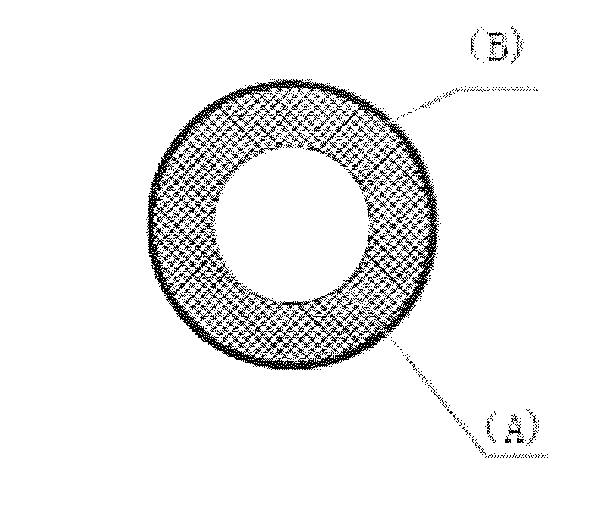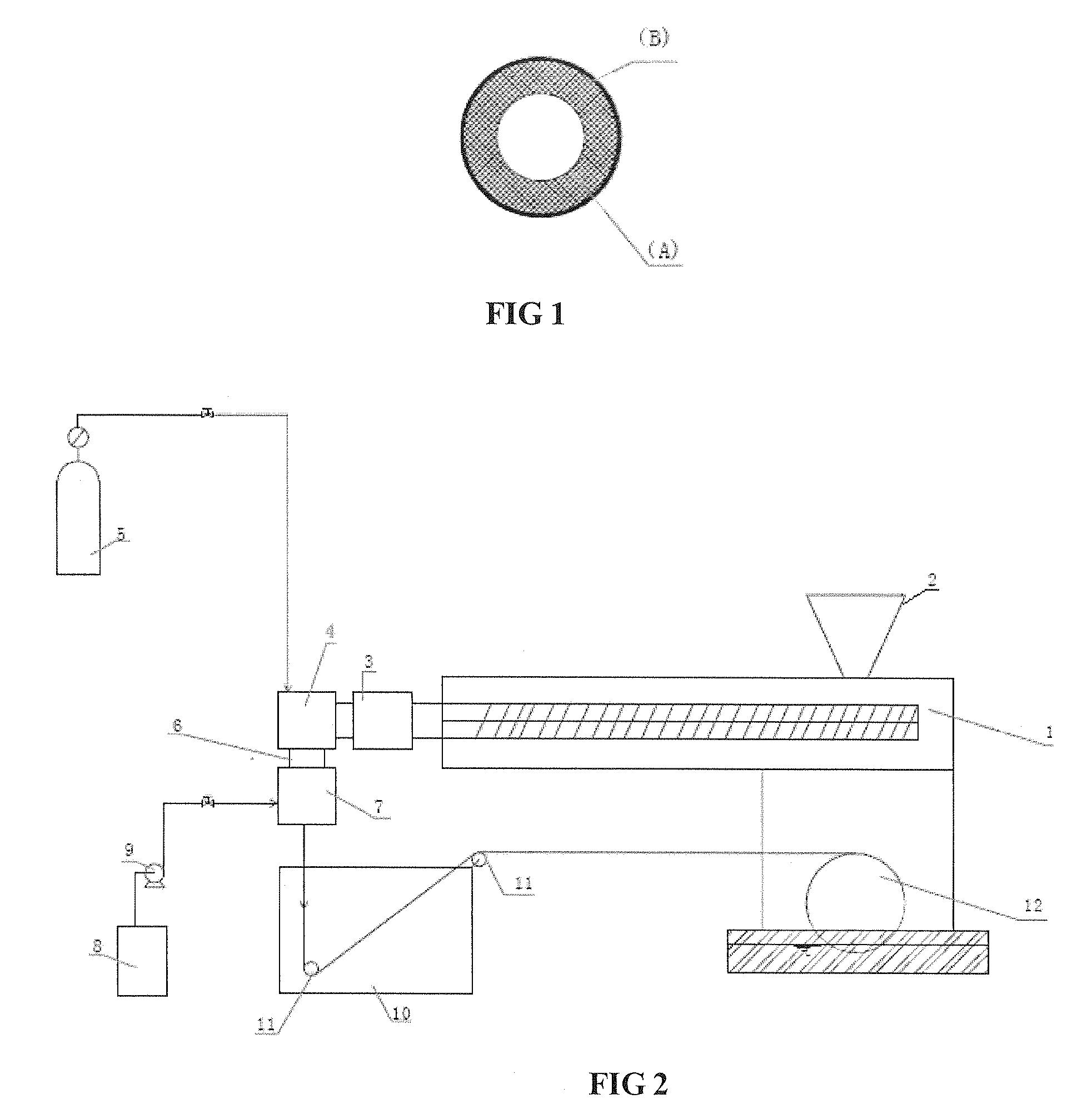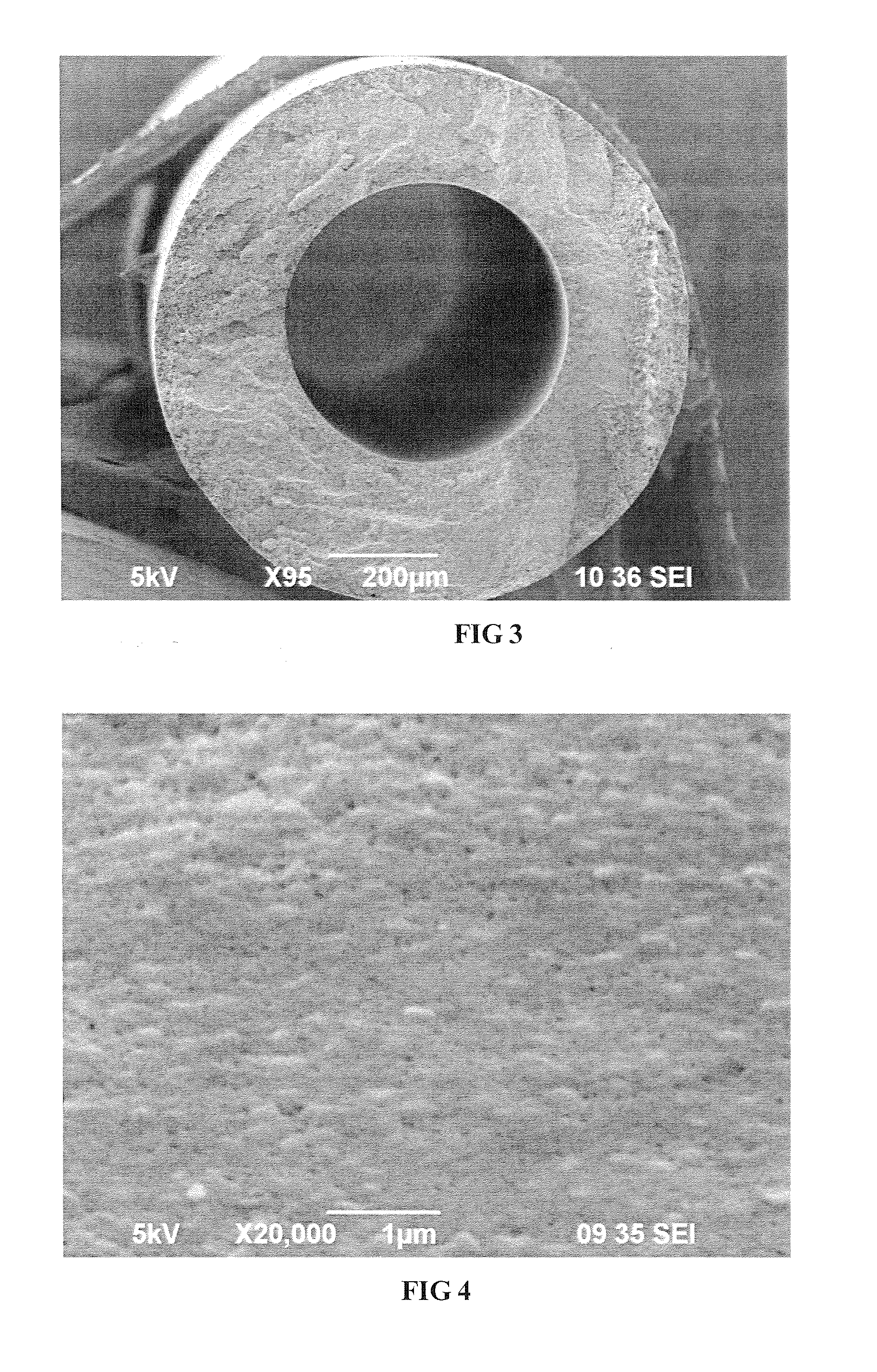Method for preparing composite multilayer porous hollow membrane and device and product thereof
a multi-layer porous, filter membrane technology, applied in the direction of moving filter element filters, filtration separation, separation processes, etc., can solve the problems of weak binding force between membranes, poor mechanical strength of membranes, severe shortage of water resources around the world, etc., to reduce mechanical strength and elongation, reduce mechanical strength and elasticity, and achieve easy and fast abstracting
- Summary
- Abstract
- Description
- Claims
- Application Information
AI Technical Summary
Benefits of technology
Problems solved by technology
Method used
Image
Examples
embodiment 1
[0058]An exemplary cross-sectional schematic diagram of a composite multilayer porous hollow fiber membrane in accordance with one embodiment of the present invention is shown in FIG. 1. As shown in FIG. 1, the composite multilayer porous hollow fiber membrane comprises an inner supporting layer A and an ultra thin coating layer B, where the inner supporting main body layer A is produced by the thermal induced phase separation (TIPS) technique from a thermoplastic polymeric resin into a hollow fiber membrane, and a thermoplastic polymeric resin dope solution comprising the same thermoplastic polymeric resin as used in producing the supporting layer A is coated on the surface of the supporting layer A by the non-solvent induced phase separation (NIPS) technique to form an ultra thin coating layer B with small pore sizes and accurate filtration function.
embodiment 2
[0059]FIG. 2 is a functional block diagram of the apparatus employed for producing a composite multilayer porous hollow fiber membrane of the present invention. The apparatus realizes a technique process of the present invention for producing a composite multilayer porous hollow fiber membrane by combining the thermal induced phase separation (TIPS) technique and the non-solvent induced phase separation (NIPS) technique. As shown in FIG. 2, the apparatus comprises an extruder 1, a melt pump 3, a fiber spinning mold 4, an adjustable fixed part 6, a coating polymeric dope solution coating device 7, a coating polymeric dope solution tank 8, a coating polymeric dope solution delivering pump 9, a coagulation bath 10, and a reeling wheel 12. The extruder 1, melt pump 3 and fiber spinning mold 4 are connected in order. The fiber spinning mold 4 and coating polymeric dope solution coating device 7 are connected by the adjustable fixed part 6. The coating polymeric dope solution tank 8 and c...
embodiment 3
[0061]Polyvinylidene fluoride homopolymer was the thermoplastic macromolecule polymer resin, being used not only for producing the inner porous supporting layer with larger pore sizes of the composite multilayer hollow fiber membrane by the thermal induced phase separation (TIPS) technique, but also for coating to form the outer layer with microfiltration / ultrafiltration functions by the non-solvent induced phase separation (NIPS) technique. The melted mixture (a) used for producing the inner supporting layer of the composite multilayer porous hollow fiber membrane by the thermal induced phase separation (TIPS) technique, was composed by weight of 25% activated nano zinc oxide (particle diameters about 30-50 nm), 40% polyvinylidene fluoride (PVDF) resin (molecular weight: 250,000-400,000 Dalton), 33.8% dioctyl phthalate, and 1.2% dibutyl phthalate, which were mixed at room temperature in a high-speed mixer to make a solid mixture in which the solid materials were homogeneously dispe...
PUM
| Property | Measurement | Unit |
|---|---|---|
| tensile strength | aaaaa | aaaaa |
| pore size | aaaaa | aaaaa |
| thickness | aaaaa | aaaaa |
Abstract
Description
Claims
Application Information
 Login to View More
Login to View More - R&D
- Intellectual Property
- Life Sciences
- Materials
- Tech Scout
- Unparalleled Data Quality
- Higher Quality Content
- 60% Fewer Hallucinations
Browse by: Latest US Patents, China's latest patents, Technical Efficacy Thesaurus, Application Domain, Technology Topic, Popular Technical Reports.
© 2025 PatSnap. All rights reserved.Legal|Privacy policy|Modern Slavery Act Transparency Statement|Sitemap|About US| Contact US: help@patsnap.com



